737-215-3211

Tips For Crate Training Your New Puppy
Do you have a new puppy that needs to crate train? You're in the right place! Puppy crate training is more than just teaching your pup to accept a crate — it's about providing a safe, comfortable haven for them.
This guide is tailor-made for dog owners seeking practical, empathetic advice on crate training a puppy. From choosing the right dog crate to establishing a routine, Puppy Fever Pro got you covered! We'll help you create a safe space where your young puppies feel secure, comfortable, and happy.
Understanding Crate Training A Puppy
Crate training is an essential part of bringing up a healthy, well-behaved dog. It's not just about providing a safe confinement area for your puppy; it's about creating a personal space where they feel secure and comfortable.
It involves teaching your puppy to accept a crate as a safe and familiar place. This process encourages your dog to view the crate as their own special den, where they can go to rest, sleep, and feel safe. It's not meant to be a punishment or a way to confine them unnecessarily.
Why Crate Train Your Puppy?
Dogs are den animals by nature, meaning they appreciate having a personal, enclosed space. Crate training taps into this instinct, providing them with a sense of security and belonging. It also helps in developing routine and discipline, making them feel more secure and less anxious.
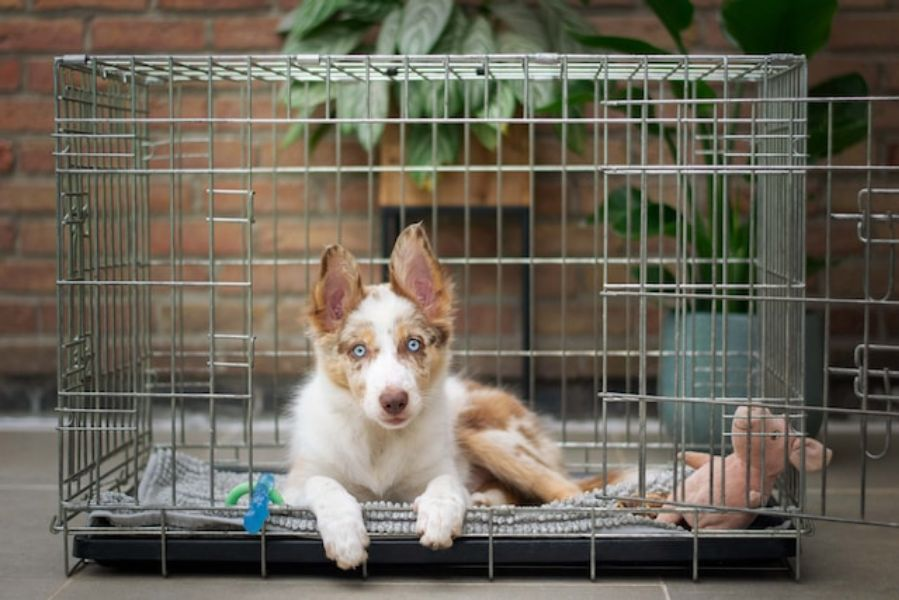
Here are some reasons why you must crate train a puppy.
-
Safety: A dog's crate keeps your puppy safe when you can't supervise them directly, preventing them from chewing on dangerous items or getting into trouble.
-
Housebreaking: Wire crates can assist in house training, as dogs naturally avoid soiling their sleeping area.
-
Anxiety Reduction: A crate can be a safe haven for dogs during stressful situations like thunderstorms or when visitors are over.
-
Travel Safety: A crate-trained dog is easier to travel with, as they're comfortable in their crate during car rides or flights.
Choosing the Right Crate
Choosing the right dog crate is crucial for successful crate training. Here's a guide to help you select the best crate for your dog:
1. Determine the Right Size
Measure your dog's length from nose to tail and height from the floor to the top of their head. Add 2 to 4 inches to each measurement to ensure enough space. Ans always consider their growth. Dog's age and they'll grow. Choose a crate size that will accommodate their adult size. Many crates come with dividers to adjust the space as your puppy grows.
2. Select the Appropriate Type
There are several types of crates to choose from, including wire, plastic, and soft-sided crates. Each has its advantages and disadvantages, so it's important to choose the one that best suits your puppy's needs and personality.
-
Wire Crates: Good for ventilation, visibility, and may come with dividers. They're foldable for easy transport and often have a removable tray for cleaning, like this YML DSA Series Heavy Duty Crate.
-
Plastic Crates: Ideal for travel and more enclosed, providing a cozier den-like space. They offer more privacy but less ventilation like Dakota 283 G3 Framed Dog Kennel.
-
Soft-Sided Crates: Lightweight and portable, best for small, calm dogs like Mr Peanut's Soft-Sided Portable Pet Crate. Not ideal for puppies or dogs that might chew the fabric.
-
Heavy-Duty Crates: Designed for strong or aggressive dogs, these are more secure and durable. An example is Zinger Heavy Duty Aluminum Cage.
3. Consider Your Dog's Needs
Every dog has their own needs and personalities. If your dog tends to chew, a metal wire crate might be more durable. But go for a more enclosed crate, like a plastic one, if you have anxious dogs to help them feel more secure.
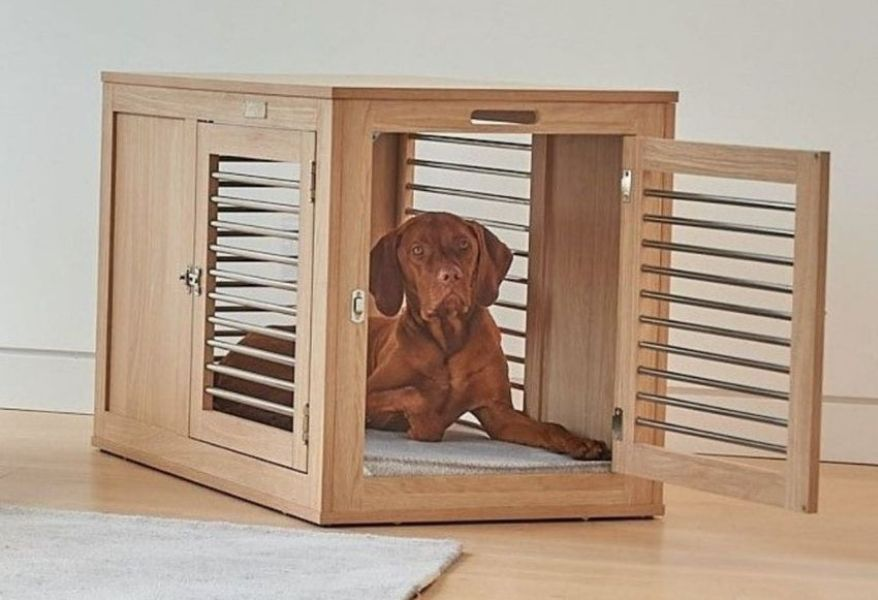
But if you travel often with your dogs, choose a lightweight, easily transportable dog crate.
4. Ease of Cleaning
Look for crates for puppies and adult dogs with a removable bottom tray to make cleaning up accidents easier. Also, check its materials and maintenance to avoid hassle and stress.
5. Accessibility and Location
Consider where the crate will be located in your home and the direction the crate door needs to open. Like Zinger Professional Dog Aluminum Cage which is available with different crate dog entry points.
Also, some dog crates offer multiple doors, which can be handy for different room layouts.
6. Additional Features
Some dog crates come with features like adjustable dividers, which are useful for growing puppies. Others might have special locking mechanisms for added security. If you have aggressive or very energetic puppies, look for more durable crates with a locking mechanism to protect them from other things and themselves.
Introducing Your Pup To The Crate
For crate training success, the introduction is crucial. It should be a positive and gradual process. Here's a guide on how to acclimate your puppy to their new crate:
-
Introduce the Crate Gradually: Place the crate in a common area where the family spends a lot of time, like the family room or living room. Leave the crate door open and let your puppy explore it on their own. Never force them to enter.
-
Make the Crate Inviting: Place a soft dog bed, like Bowsers The Streamline Sterling Lounge Dog Bed, or a blanket inside to make it cozy. Include a couple of their favorite dog toys to create a fun and welcoming environment. Use small food treats to lure them into the crate and crate train your dog using positive reinforcement. Place them near the entrance, and gradually move them inside as your puppy gets more comfortable.
-
Feed Meals Near the Crate: Begin feeding your dog by placing your puppy's food dish near the crate, then gradually move it inside over several regular meals.
-
Encourage Voluntary Entry: Use a cheerful voice to encourage your puppy to enter the crate. Praise them when they go in, but don’t close the door right away. Let your dog briefly stay inside.
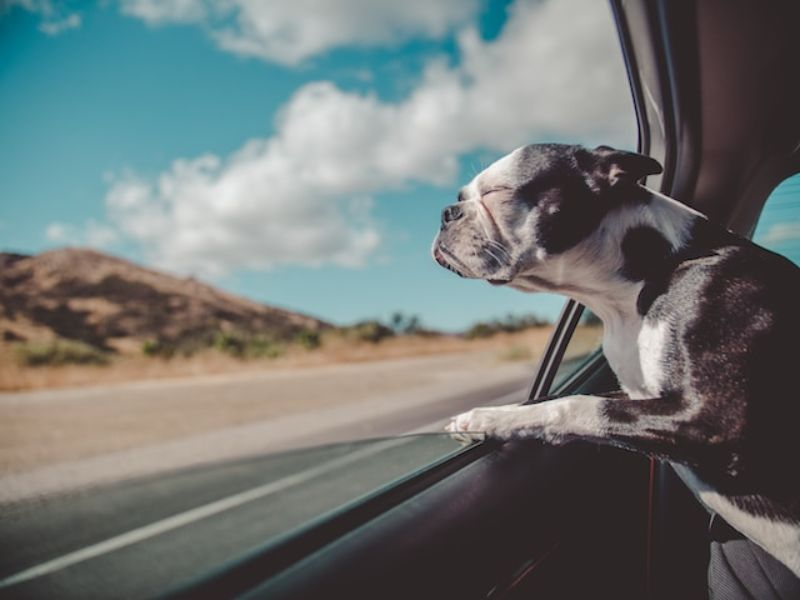
-
Short Training Sessions: Start with short training sessions of about 5-10 minutes while you remain nearby or sit quietly beside or near your dog. This prevents separation anxiety and ensures your dogs you won't leave them. Start with a few minutes and gradually increase the time as your puppy becomes more comfortable, always monitoring their response.
-
Closing the Door: Once your puppy is comfortable eating their meals in the crate, start closing the door while they’re eating and open it as soon as they’re done. Gradually extend the time the door is closed after they finish their meal.
-
Leave the Room Briefly: Once they’re comfortable with the door closed, start leaving the room for short periods. Leave quietly, for a few minutes. Return and open the crate before your dog whines and experiences separation anxiety.
-
Gradual Increase in Crate Time: Slowly increase the time your puppy spends in the crate while you're out of sight. Avoid leaving them for longer periods to avoid bladder and bowel problems. Also, don't forget to stick to your usual potty break schedule.
-
Overnight Crate Training: Begin having your puppy sleep in the crate overnight. This can be done once they’re comfortable being in the crate for extended periods during the day. Don't forget to place their dog bed and blanket inside to ensure they're sleeping comfortably at night.
-
Consistency and Routine: Maintain a consistent schedule for crate times. This helps your puppy understand and anticipate when they’ll be in their crate. It also makes the crate training process easier for you and your furry friend.
Crate Training A Puppy: Dos And Don'ts
Crate training can be a highly effective and humane method to train your puppy, but it's important to do it correctly. Here are some dos and don’ts, including common mistakes to avoid, positive reinforcement techniques, and how to handle whining or barking:
Crate Training Dos
-
Start Slowly: Introduce your puppy to the crate gradually. Make it a positive experience with treats and praise.
-
Use Positive Reinforcement: Reward your puppy with yummy treats like Omega Fields Smart Hearts Dog Treats, praise, or dog toys when they enter the crate willingly or behave calmly inside.
-
Maintain a Schedule: Consistency is key. Feed them at regular times and take them out for bathroom breaks at the same times each day.
-
Keep Training Sessions Short: Initially, keep the crate time short and gradually increase as your puppy gets more comfortable.
-
Make the Crate Comfortable: Ensure the crate is a cozy and inviting space with a soft dog bed, favorite toy, soft blanket, and water if they're in there for longer periods.

-
Use the Crate for Nap and Quiet Time: Encourage your puppy to use the crate for naps and relaxation, not just when you're leaving the house.
-
Be Patient: Crate training in the family room and home takes time. Be patient and maintain a calm demeanor. Use an encouraging, happy tone to assure and praise your pup.
Crate Training Don’ts
-
Don't Use the Crate as Punishment: Dog crates should be a safe and happy place, not a place for time-outs.
-
Avoid Leaving Your Puppy for Too Long: Puppies can only hold their bladders for a few hours, so ensure they’re let out regularly.
-
Don’t Rush the Process: Forcing your puppy into the crate or moving too quickly can create anxiety.
-
Don't Ignore Potential Problems: If your puppy consistently shows distress, reassess your training procedures and methods. Continuous distress can lead to long-term issues.
-
Don’t Neglect Exercise and Interaction: Crate time is not a substitute for exercise and social interaction. Puppies need play, exercise, and bonding time with you, their pet parents.
Responding to Whining or Barking:
-
Understand the Cause: Determine if the whining is due to needing a bathroom break, lack of exercise, anxiety, or just seeking attention.
-
Avoid Immediate Attention: If you’re sure they don’t need to go outside, avoid immediately letting them out when they whine or bark, as this can teach them that these behaviors will get them what they want.
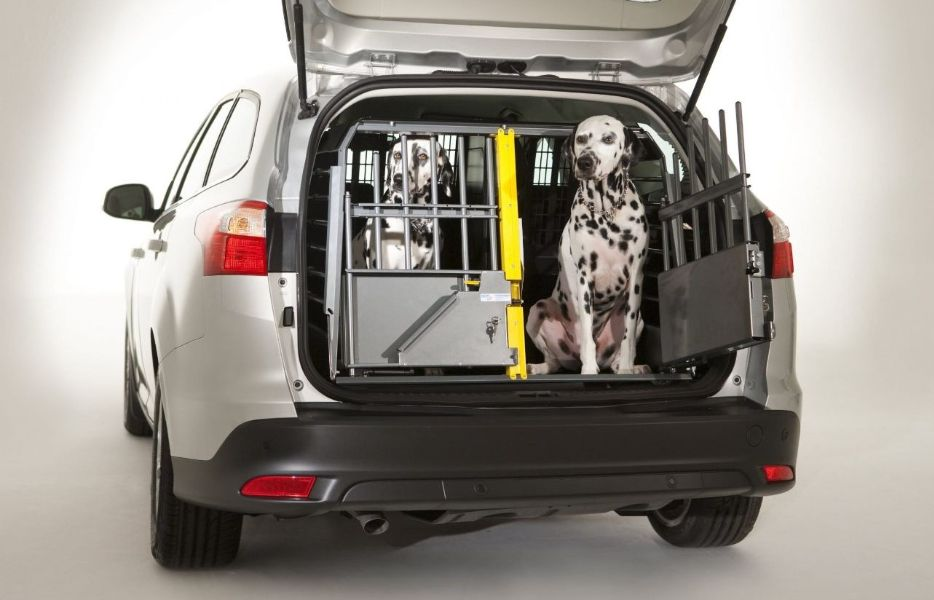
-
Wait for Quiet Moments: Wait until they are quiet for a few moments before opening the crate. This teaches them that being calm and quiet leads to rewards.
-
Provide Adequate Exercise: Ensure your puppy is getting enough physical and mental stimulation during the day so they are more relaxed in the crate.
FAQs
Can crate training be used for older dogs?
Yes, crate training can be used for older dogs. Patience and consistency are important, as they'll need more time and effort to adapt to new routines.
How long should a puppy be in the crate?
In general, puppies can control their bladders for one hour for every month of age, up to a maximum of around 8 hours for older puppies. For instance, a 3-month-old puppy should ideally not be crated for more than 3 hours at a time, except at night.
What if my puppy doesn’t like the crate?
Gradually acclimate your puppy to the crate in a positive way. Use treats, favorite toys, and comfy bedding to make the crate inviting. Keep initial sessions short and pleasant. Never force your puppy into the crate, as this can increase anxiety. If difficulties persist, consider consulting a professional dog trainer for additional guidance.
Is crate training necessary for all puppies?
Crate training is not strictly necessary for all puppies, but it is a highly beneficial tool for many. It aids in in-house training, provides a safe space for the puppy, and is useful for travel and management purposes. However, the decision to crate train depends on the individual puppy's needs, the owner's lifestyle, and alternative methods of training and confinement available.
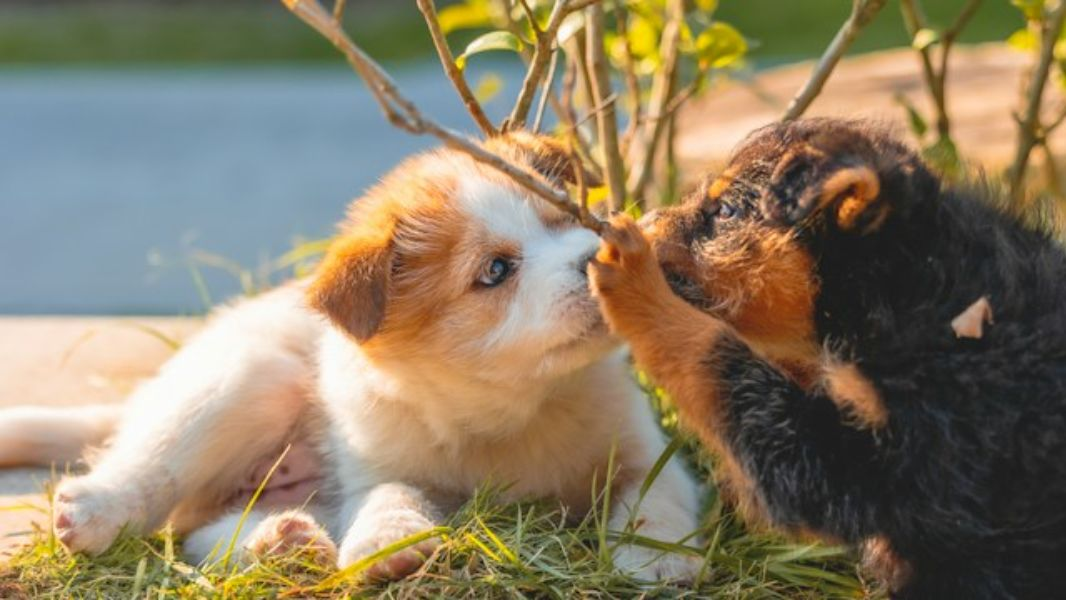
Start Crate Training Process With Puppy Fever Pro's Durable Dog Crates!
Crate training a puppy or older dog takes time, patience, and effort. As dog owners, it's our responsibility to ensure our beloved furry friends are safe, comfortable, and secure at home or while traveling. Get the right dog crate for your pup at Puppy Fever Pro and train them with a lot of patience.
We have different quality dog crates, pens, and kennels for homes, cars, airplanes, and road trips. If you have any specific pet crate needs, don't hesitate to contact us.


Leave a comment